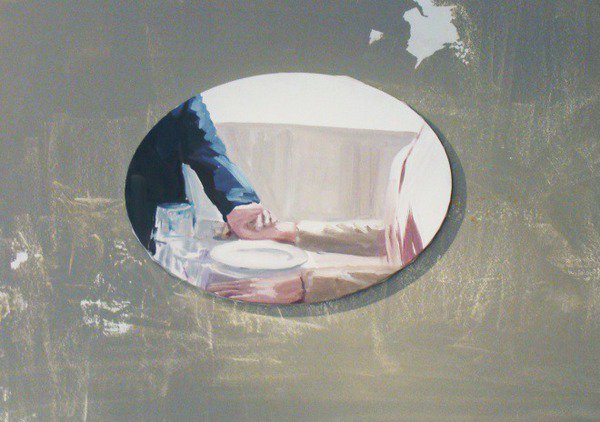Miracles - Wunderkammer
dal 10/3/2011 al 29/4/2011
Segnalato da
Jana Farmanova
Maria Olivares Luz Capelle
Robert Mittringer
Leo Ferdinando Demetz
Anne Zwiener
Ina Loitzl
Teresa Praauer
Renate Egger
Barbara Doser
Hofstetter Kurt
10/3/2011
Miracles - Wunderkammer
Kro Art Gallery, Wien
The term miracle generally describes a phenomenon whose existence cannot really be explained, and which triggers emotions ranging from bewilderment to admiration. A group show including Jana Farmanova, Maria Olivares Luz Capelle, Robert Mittringer, Leo Ferdinando Demetz, Anne Zwiener...

participating artists : Jana Farmanova (SK), Maria Olivares Luz Capelle (RA/A), Robert Mittringer (A), Leo Ferdinando Demetz (I) , Anne Zwiener (A) and animations of the cooperationpartner Kooperationspartners tricky women animation festival : Ina Loitzl, Teresa Präauer, Renate Egger, Barbara Doser und Hofstetter Kurt
The term miracle generally describes a phenomenon whose existence cannot really be explained, and which triggers emotions ranging from bewilderment to admiration. A miracle always represents something astonishing, surprising, and extraordinary.
Examined more closely, "miracle" denotes an occurrence that, while actually existing in space and time, seemingly or really contradicts human reason and experience, and defies laws of nature or history.
These wonder-ful experiences are not in line with what is ordinarily to be expected, neither can they be automatically integrated in any valid order or system, or explained rationally: objects can appear to move as if influenced by an invisible hand. They are the manifestation of a strange, non-reproducible kind of logic; a mysterious automatism that evades the control of the observer.
Whether or not an event or thing deserves being called a miracle is, principally speaking, a matter for the beholder. The relevant classification depends strongly on an individual’s education, ethnic origin and socialisation, as well as the approach to religion and mysticism. While, as a rule, religious people have a highly favourable attitude towards miracles, miracles are often categorically dismissed by the a-religious. Amongst all religions, there are groups and spiritual orientations for whom extraordinary, spectacular, and sensational things, paired with sentiment and emotion, are very much in the foreground of their belief.
The associated disregard for rational thought tends to intentionally leave aside the search for truth so as to maintain their wondersome, astounding first perception. The wunderkammer, or cabinet of wonder, was used in earlier times to exhibit curiosities and exotic articles from far-away lands. Similarly, today we come across technical innovations whose sophisticated mechanisms can appear to technically uneducated persons to be real miracles.
Opening Friday, 11. March 2011, 19
Kro Art contemporary
Getreidemarkt 15 - A-1060 Wien
Opening hours Tuesday – Friday 2 p.m. – 7 p.m. and on request
free admisison



